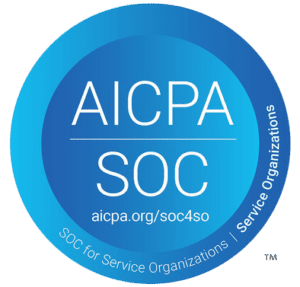In today’s ultra-competitive market, many advisors are seeking tactics to establish their competitive advantage and set themselves apart. As an advisor, your client reporting processes are just one of many ways you can add value. While they are just one tool, regular reports are perhaps the most critical touchpoint you have with your clients. This is because some clients may lack financial literacy and an overall sophistication when it comes to their finances (in some cases, that’s what they pay you for!). As such many clients leverage touchpoints and consistent reporting as a benchmark to understand what their advisor does for them and determine if that advisor is doing a good job. In EY’s 2019 Wealth Management Industry Report, that personal attention was a top 3 valued component of the advisory relationship.
At the end of the day, this is why goal setting and reporting (including performance) processes are so critical in advisor-client relationships. These touchpoints are one of the few ways clients can ensure accountability and transparency in the relationship while giving clients the attention they expect. When done well, reports show clients that their advisor is working for them, being proactive, and keeping their best interest in mind.
However, great performance reports are not about providing as much data as possible in a document that takes a CFA to understand. They’re about consistently providing key data and insights that lend themselves to meaningful conversations with clients. When you do this well, you can consistently demonstrate you’re adding value to your clients. In today’s post we’ll explore:
- How to effectively leverage technology for client reporting
- What clients really want out of the reporting process, and how to give that to them
- Best practices for performance reporting
- How to tell your advisor story in your client reports
Leveraging Technology for Reporting
In today’s market, advisors understand they must be effectively leveraging technology in order to get ahead. In fact, CEB’s 2016 Digital Client Experience Survey found that 72% of clients consider their advisor’s access to industry-leading tools and technology either very or extremely important.
And while there have been extensive advancements in the field of advisor technology in terms of data aggregations, automation, and deep insights, changes to client reporting have remained mostly superficial. For many years, advisors focused on how they could improve the “look and feel” of their reports in order to highlight their own brand. The market focused on offering tools that generated lengthy, highly customized, eye-catching reports with a branded touch.
However, as the overall complexity of reports increased, so did the time advisors spent on managing and creating these hyper-custom reports. Many advisors lost sight of the fact that the real value of advisor technology is to automate and add efficiency to back-office tasks, so advisors have more time to spend building relationships with their clients.
Advisors should focus on tasks that are most important to achieving client goals, delivering value, and building long-term client relationships. This requires a deep understanding of each client’s specific situation, goals, and objectives, and translating that into a coherent, mutually-agreed upon plan.
What’s most critical is that performance reporting technology is allowing advisors to demonstrate this process to clients. It’s absolutely crucial to note that it doesn’t matter how great your reports look, if they don’t tell a story to your clients. At the end of the day, client reports shouldn’t be great-looking marketing gimmicks, they should be valuable tools used to spark deep, meaningful conversations. And remember: the right advisor technology can go a long way in helping advisors deliver the right data, at the right level, at the right time to clients.
What Your Clients Want, and How to Give it To Them
At the end of the day, clients want transparency and accountability. And at a deeper level, they need trust, assurance, and confidence within the advisor/client relationship. A 2017 study by BlackRock found that clients care almost as much about their relationship with and perception of their advisor as they do about their financial performance. And research by Vanguard found that 94% of clients would make a referral if they had a high degree of trust in their advisor.
As such, any advisor that’s looking to grow their firm must determine how to best leverage client reporting processes to build trust-based relationships. A lack of clarity and transparency can be one of the greatest hindrances of trust-building within the advisor/client relationship. Clients want to feel that they know where they stand, and that they’re on-track to achieve their goals.
Constant and consistent client touchpoints are the crux of a productive relationship. Advisors must see reporting, including transparency on performance, not just as a means to share data with clients, but as a way to demonstrate to them that you’re working in their best interest to help them achieve their goals. The more frequent and consistent these touches are, the better. Clients enjoy feeling in the know, and the more advisors can stay top-of-mind for clients, the more they showcase their value.
Additionally, advisors that are more proactive in their reporting reap the benefit of mitigating potential fallout during market volatility. Clients are less reactive and apprehensive when they’ve been receiving regular communication from their advisors and know that their advisor is ensuring everything is on track. During these critical times, having a strong, trust-driven relationship with your clients is more important than ever. When the market is down, your clients already know––delivering the same consistent core message demonstrates you planned ahead so they didn’t have to.
When it comes to delivering what clients want in an advisor relationship, maintain a regular reporting calendar and ensure you’re tailoring those conversations around your client’s goals and personal situations.
Best Practices for Reporting
When it comes to meaningful client-reporting that builds trust and fosters successful relationships, there are some common missteps advisors make. One common misconception advisors might fall victim to is that clients want as much information and analysis as possible. This is, in most cases, untrue and can actually lead to a lack of clarity in your client relationships. At the end of the day, clients only want to know the key insights that are most relevant to their financial position. And, most importantly, they want to know that you understand their goals and that you have them on-track to achieve those goals.
On a deeper level, clients want to understand how their advisor’s strategy is affecting their investment performance. They need to know that you’re making the right decisions on their behalf. This is where the rubber meets the road in terms of the advisor/client relationship, and this is why having impactful reporting processes is so crucial. The most successful advisors are leveraging technology to streamline manual processes like data aggregation and report creation. This allows them to focus on using those reports for conversations that are centered around compelling key insights that clients really care about.
Here are some best practices to follow when it comes to impactful reporting:
Brevity = Clarity
Don’t fall into the trap of providing the most data or analytics possible. More often than not, this convoluted approach decreases clarity, rather than letting it flourish. Instead, focus on providing only the most critical, key insights that show clients their financial picture and where they stand towards achieving their goals. For example, research by DALBAR, an independent advisor-client research and best practices group, indicates that including information on account allocation, investment objectives, and performance, were sufficient for the client to feel they had a strong understanding of their core financial position.
Frequency & Consistency
It can be easy to fall into a system of yearly or quarterly client check-ins. However, today’s market demands more frequent client touchpoints in order to foster a productive advisor/client relationship. Providing more frequent and consistent information can help avoid clients making rash decisions, and instead encourage them to focus on long-term goals and objectives. Your key objective should be to keep clients consistently informed and feeling comfortable about their progress towards their goals. Automate the most frequent outreach touches if possible and encourage an “open-door” policy to make sure you stay in front of clients, regardless of what happens in the market.
Provide Context
Reports are nothing but numbers on a page without an advisor to provide the context. Ensure that you’re leveraging reports to start a conversation with clients, and not just to throw data at them. Your reports should facilitate big-picture conversations about clients’ long-term goals and the steps you’re going to help them take to get there. Remember that things that may seem obvious to you may not be the same for your clients. As a simple example, don’t just give your clients an asset allocation report, help them understand why their specific allocation is important for achieving their own goals.
How to Tell a Story With Your Performance Reports
At the highest level, performance reports tell your clients’ stories. However, don’t miss an opportunity to leverage them to tell your story, too. As an advisor, reports can be your most effective tool to showcase the value of your work, and to forge stronger relationships with clients. By leveraging modern advisor technology, advisors can create meaningful reports that are more than just data. They’re the story of the client’s goals, hopes, and dreams, and how you are helping them get there. It’s up to you to paint a vivid picture for your clients on several fronts including:
Performance: showcase how their portfolio is performing in relation to the overall market or specific sectors. Even if you don’t pursue active management investment strategies, helping your clients understand the context of their gains and losses helps them know they’re on track or guide them to make changes.
Planning: emphasize how investment decisions and financial planning strategies are aligned. Consider connecting the target rate of returns and asset allocation back to your overall financial plan as appropriate for your planning strategy.
Goals: reflect shifts in client goals and/or strategies, and what the long-term impact of those changes will be. Help your client understand how they may or may not need to shift elements of their personal finance, or how you may do so for them.


